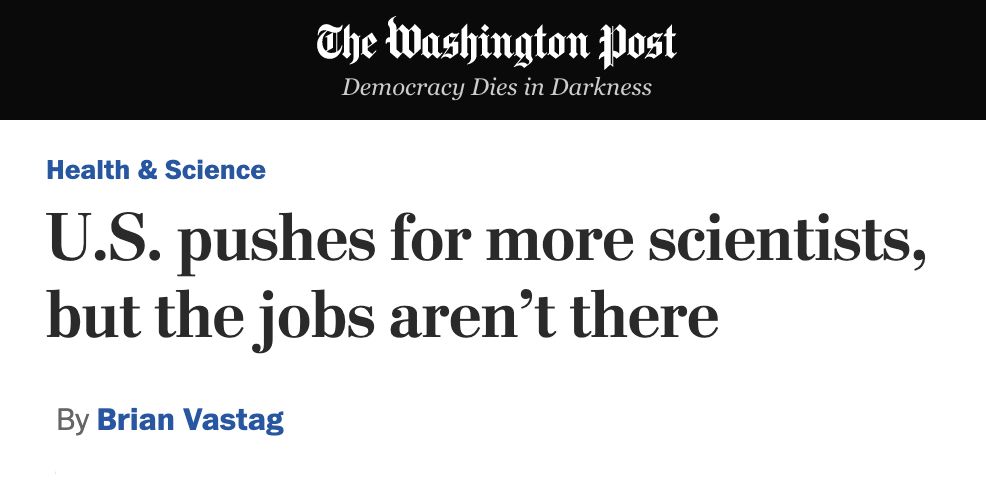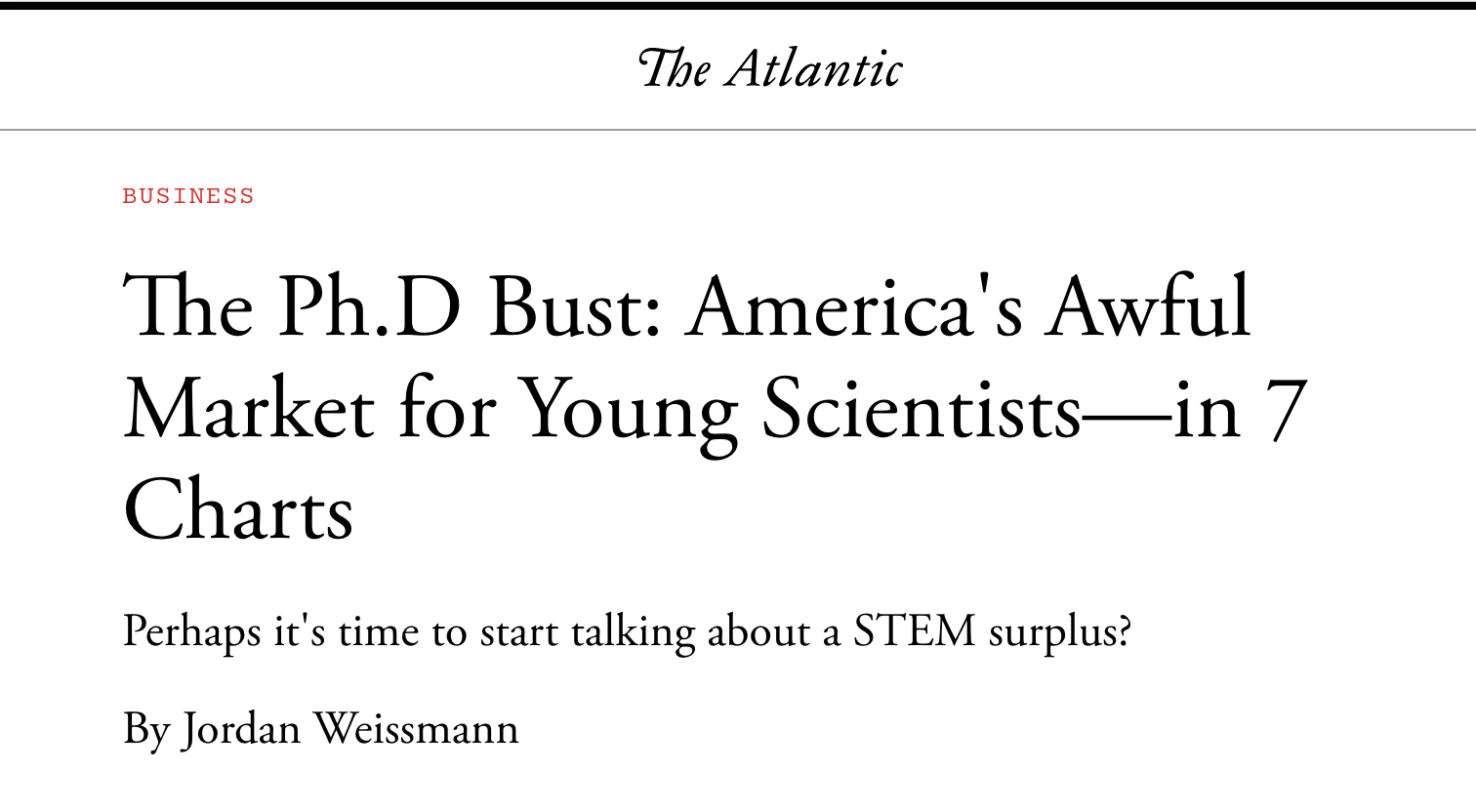Immigration provisions in COMPETES Act are about money, not competitiveness
Lisa’s blog about the House’s COMPETES Act touched a nerve with Alan Tonelson:
As explained by NumbersUSA analyst Lisa Irving, this legislation “allows for an unlimited number of green cards for citizens of foreign countries seeking permanent U.S. residency who hold a U.S. doctorate degree, or its equivalent from a foreign institution, in STEM [Science, Technology, Engineering, and Math fields].”
Adds Irving, “This provision would result in further limiting the job prospects and resources for highly qualified Americans in tech fields.”
To add insult to injury, as Irving reminds, the measure is based on phony and thoroughly debunked claims, mainly propagated by the U.S. technology industry, that it’s facing a crippling labor and talent shortage. In fact, the tech sector’s prime objective is curbing wage and other compensation gains by opening the flood gates ever wider to foreign-born technologists willing to accept much lower pay.
Emphasis mine. Every year, there is a proposal to “staple a green card to the diploma” of a foreign student who earns a PhD. The idea that there aren’t enough intelligent Americans to fill the smart jobs has been especially sticky with a particular subset of Americans, Members of the United States Congress, but it isn’t true.
As early as the 1980s, The National Science Foundation (NSF) urged lawmakers to admit more foreign students into Ph.D programs for the purpose of depressing wages:
“A growing influx of foreign PhD’s into U.S. labor markets will hold down the level of PhD salaries to the extent that foreign students are attracted to U.S. doctoral programs as a way of immigrating to the U.S….
“….these same data can be interpreted to indicate that foreign students are displacing U.S. students because foreign students are not responsive to small decreases in real starting salaries for PhD’s and much more responsive to modest increases in real salaries (or that they are more responsive to the immigration opportunities represented by openings in graduate school than to salary signals).”
By the 2000s, colleges and universities were graduating more than twice the number of STEM graduates (Bachelor’s, Master’s, and Ph.D.’s) than there were expected jobs. That didn’t stop one administration and Congress after another from toying with the ideas that are now found in The COMPETES Act. These headlines are from 2012-2013, but they could have been written today:


Professor Hal Salzman of Rutgers University describes a pyramid scheme where universities get cheap labor and debt-saddled graduates get left behind:
“…following a bachelor’s degree and another four or five years of intensive study and low-wage labor in a professor’s lab, the typical STEM Ph.D. can look forward to yet another six or eight years working at an average salary of $50,000 before they can compete for a regular job in a flooded labor market. For some, a deep and abiding love of science and engineering and willingness to play the job lottery keeps them in the game. For many others, these dim prospects push them to go elsewhere. And this pyramid scheme—of many low-paid graduate students and post-docs working for a small number of senior scientists—rests on having the large supply of foreign students…”
None of this is about competitiveness.
“Contrary to popular belief,” writes Hilarie Gamm in Billions Lost – The American Tech Crisis and The Road Map To Change, “the facts represented in the NBER’s Working Paper Series, “Skill Gaps, Skill Shortages and Skill Mismatches: Evidence for the U.S.,” indicate that America’s children are scoring better on the TIMSS (Trends in International Mathematics and Science Study) test and the PISA (Programme for International Student Assessment) tests than ever before.”
This is about highly-educated cheap labor. And if the House-passed COMPETES Act is signed into law, history will repeat itself.
In 2005, the National Academies published two reports that spoke to the debate about our immigration policies for the highly-educated. One of them, according to Beryl Lieff Benderly, “documented a genuine shortage not of homegrown scientists but of viable career opportunities for those scientists;” it was authored by a committee chaired by Thomas Cech, a Nobel laureate in chemistry.
The other report described, in Benderly’s words, the “inability of the American educational system to fill the nation’s need for STEM workers and meet the perceived challenge of India and China to American technological supremacy.” That report was produced by a committee headed by the retired chairman and CEO of Lockheed Martin.
One of these reports became “freakishly influential” among the media and political classes. The other was ignored. Can you guess?
Not long after, Congress enacted a bill to further increase the number of STEM graduates from U.S. universities. They called it the COMPETES Act.
JEREMY BECK is a V.P., Deputy Director for NumbersUSA